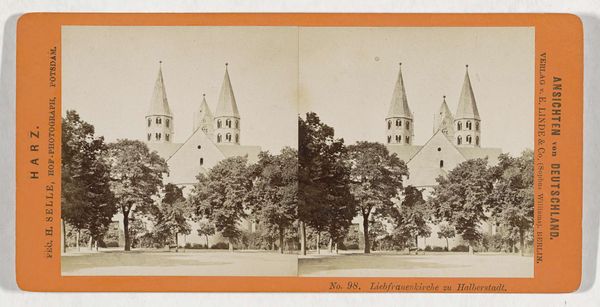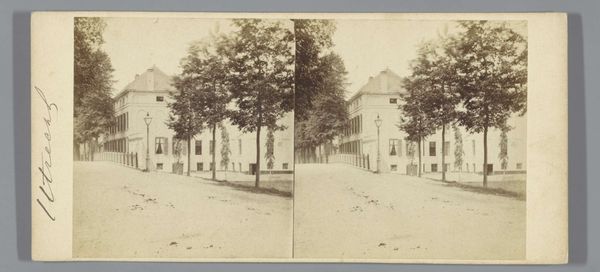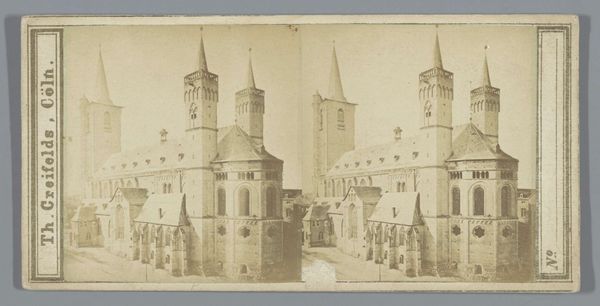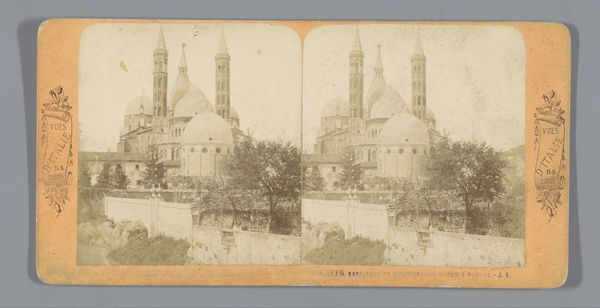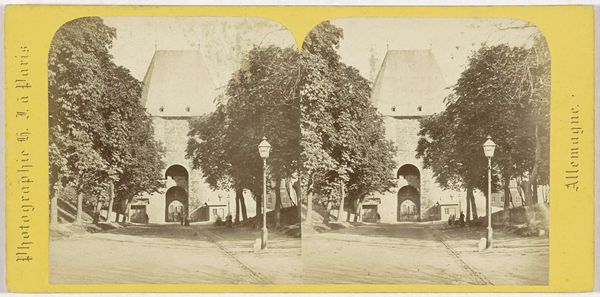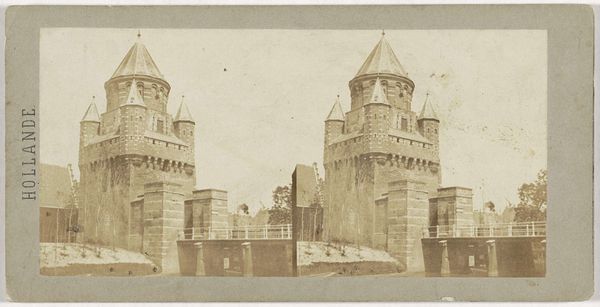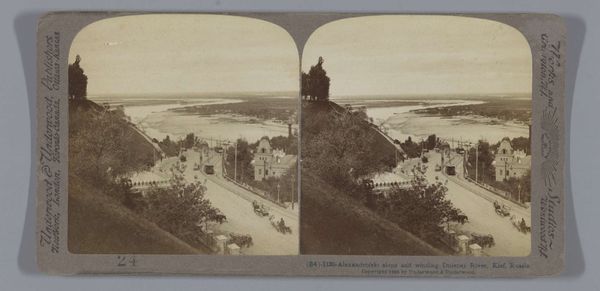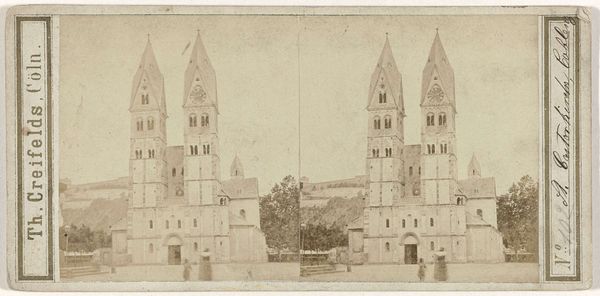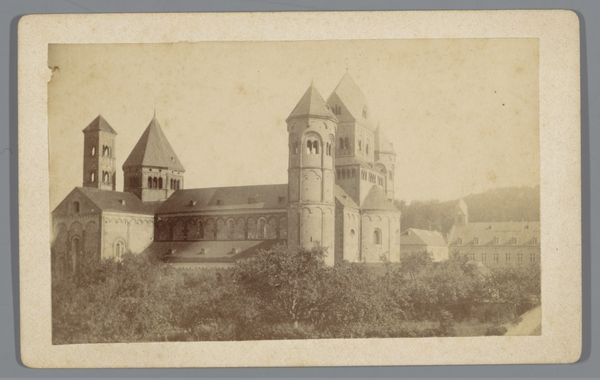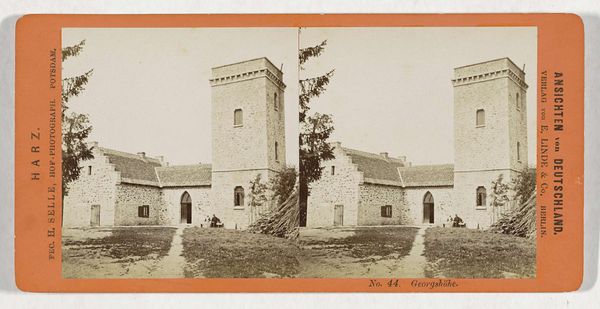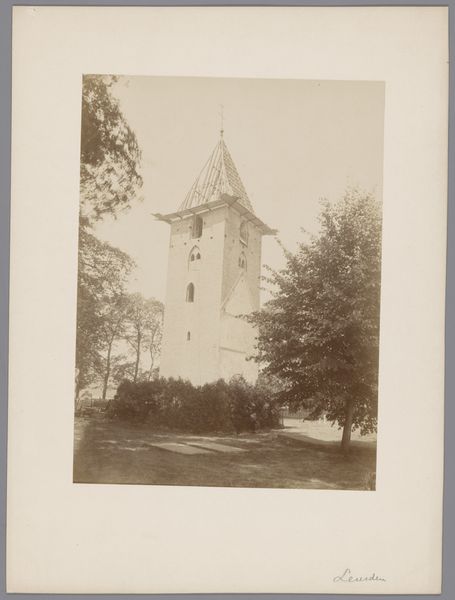
photography
#
dutch-golden-age
#
photography
#
cityscape
#
realism
Dimensions: height 85 mm, width 174 mm
Copyright: Rijks Museum: Open Domain
Curator: Well, isn't this something? Pieter Oosterhuis, capturing the Kleine Houtpoort in Haarlem. The photographic print dates from around 1859 to 1865. A sturdy gate pictured frontally with a symmetrical view. Editor: Yes, very symmetrical indeed, almost painfully so! But also...charming? It's that sepia tone, isn't it? Instantly ages the picture, bestowing a nostalgic aura. It's almost a portal. Curator: You keyed in on something crucial, portals. The Kleine Houtpoort wasn't just an entry point into Haarlem; it was a symbolic gateway between safety and the unknown. These gates represented civic identity, community boundaries, marking who was "in" and who was "out," so to speak. Editor: Oh, interesting, because I can't shake off this unsettling vibe, though. Those skeletal trees and that silent passageway make me think this wasn't such a friendly or welcoming place, no, rather the opposite. There’s a sense of enforced order. Rigid. A little… oppressive? Curator: Oppressive perhaps for some. Haarlem at this time was a prosperous trading city. The gate signified power and security, a well-defended commercial hub. Also, observe the way Oosterhuis has framed the structure with trees. It's quite deliberate and visually unifying; they give a sense of depth, anchoring the structure to the surrounding land, the tall slim shapes providing balance. Editor: True. Okay, I see what you mean. But, listen, even with the historical context, the absence of any human figure amplifies that feeling. Makes me think that these gates don’t let people enter as much as confine them inside! Curator: An astute observation. This gate, or city tower no longer exists, but is permanently marked in history by photography. Editor: See? That melancholy again. Knowing it’s gone does add another layer. Perhaps that's where that unsettling sensation came from originally. Curator: Well, thank you, these structures and their stories fade unless we revisit them and draw them back to the front through shared exploration, reflection, and dialogue. Editor: You're absolutely right. A bit like bringing the past, or in this case a tower, back to life—if only for a moment.
Comments
No comments
Be the first to comment and join the conversation on the ultimate creative platform.

